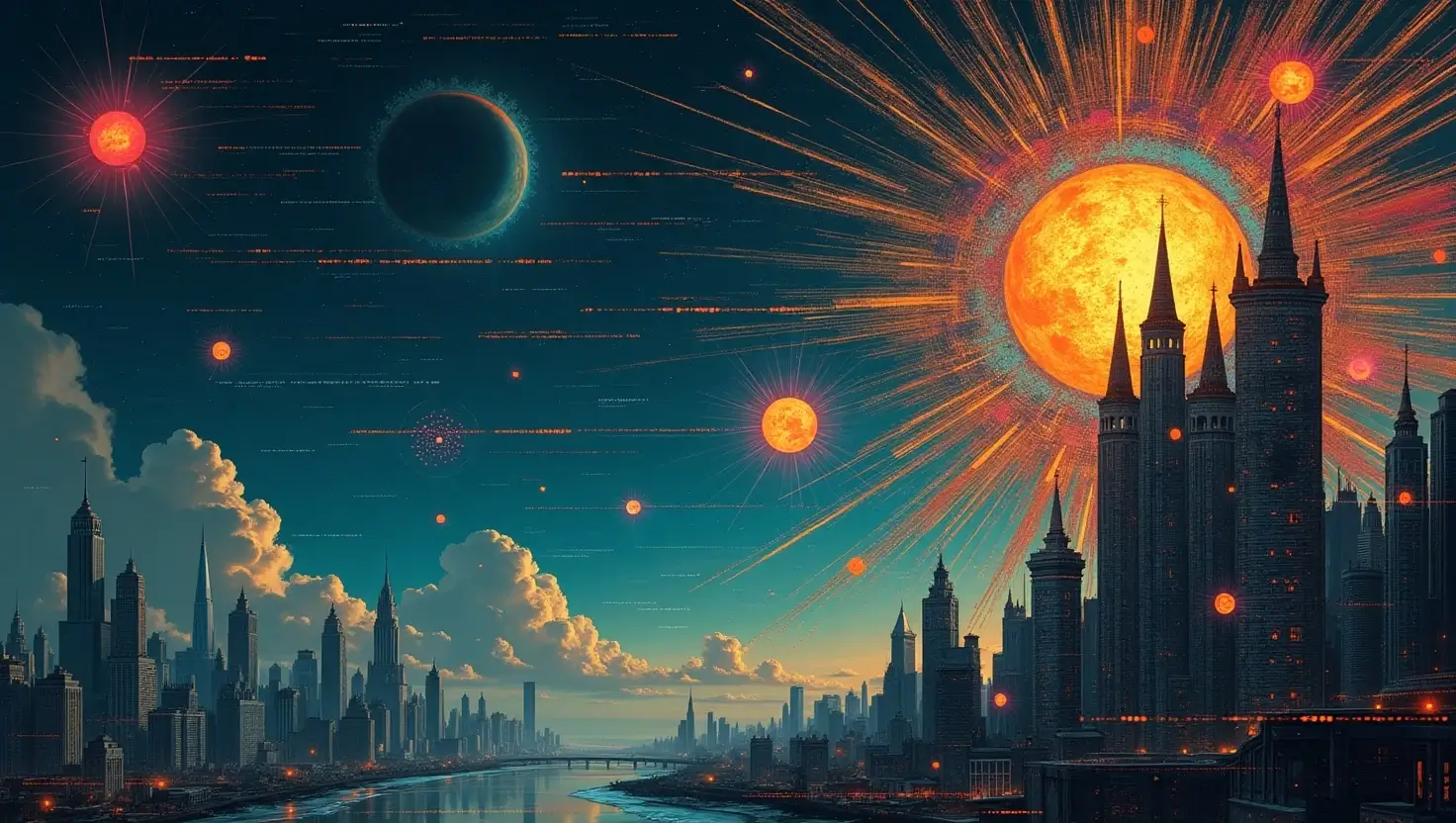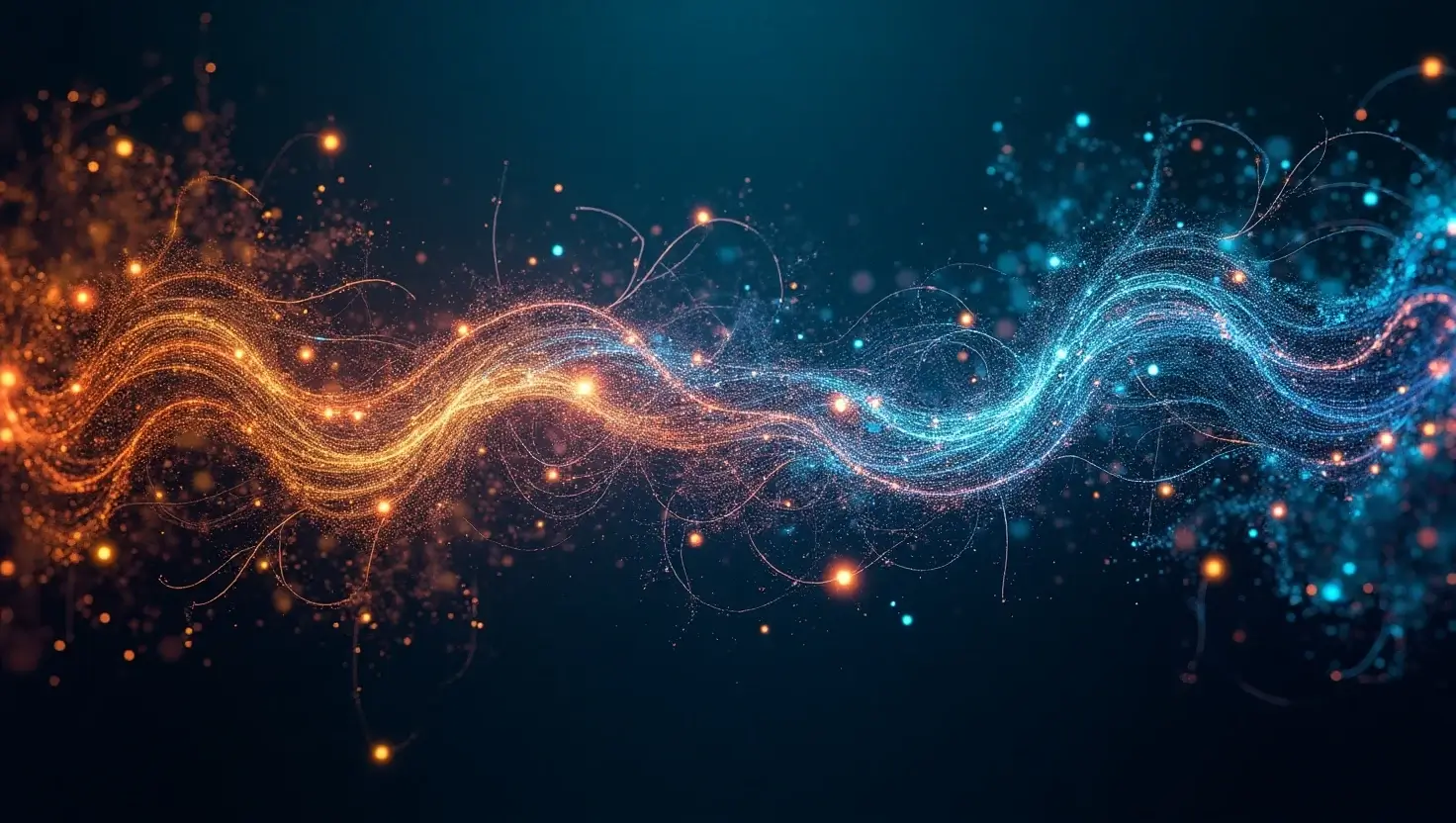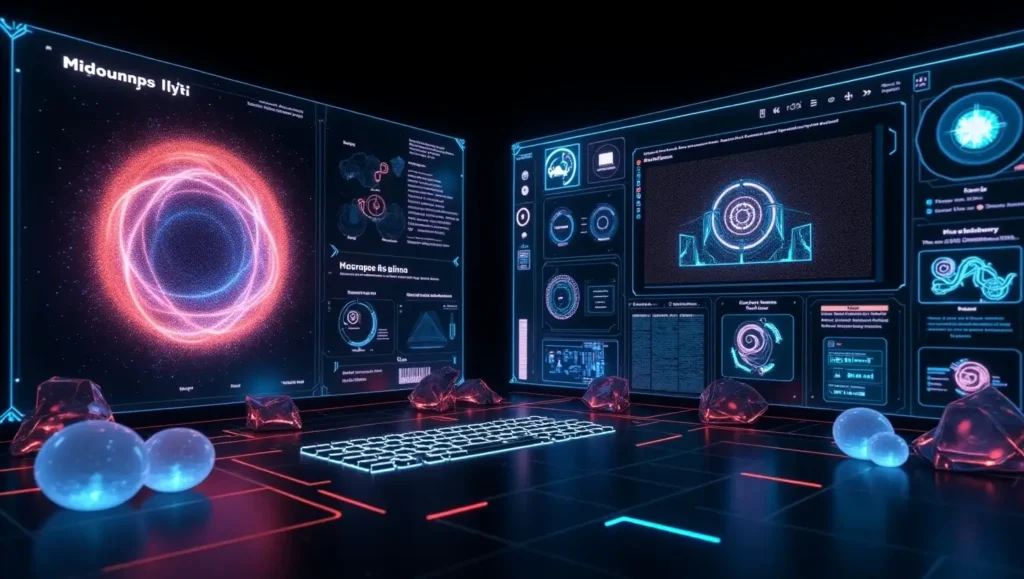“Over 55% of Gen Z creators say AI-generated art reflects their identity more than traditional media.”
In a digital world buzzing with innovation, a cryptic term has begun surfacing across artistic platforms, tech subcultures, and AI labs—Uncuymaza. At first glance, it looks like a randomly generated artifact from a broken algorithm. But for those paying attention, it’s fast becoming a symbolic term at the core of an emerging creative revolution.
Born in the blurred boundaries between machine output and human expression, Uncuymaza isn’t just some internet oddity. It pulses with the language of AI-generated art, the emotional chaos of surrealist symbolism, and the collective language of digital subcultures. It doesn’t explain itself—rather, it invites reinterpretation through art, code, and narrative.
This blog dives into the mystery, exploring whether Uncuymaza is a post-linguistic symbol, a conceptual construct, or the cultural DNA of a new artistic epoch. Along the way, you’ll navigate through the logic-defying world of machine intelligence, analyze philosophical symbolism, and uncover the importance of nonlinear thought patterns.
What if this isn’t just another trend but a pivotal shift in how we define creativity in the age of artificial minds? Keep reading—we’re just getting started.
What Is Uncuymaza? A Quick Primer
At its core, Uncuymaza is a mystery—a term with no dictionary definition, no origin story, yet its influence spans across modern digital expressions. Emerging from code, art, and chaos, it acts as a metaphysical innovation that blends artificial spontaneity with human depth. Its meaning is elusive by design, making it a canvas for creative projection rather than interpretation.
Within creative communities, the digital enigma functions as a conceptual construct—a blank metaphor to be shaped, stretched, or shattered. Artists use it to title pieces that defy traditional classification. Writers thread it into speculative fiction as a relic from machine-created mythologies. Coders reference it as a placeholder in generative scripts, where it stands for nothing and everything all at once.
It’s also catching on within experimental tech communities, where it operates like digital folklore. Tech forums like GitHub mention it in README files as a “placeholder for non-replicable randomness,” while AI-generated language tools use it to explore the limits of abstract coherence. In artistic circles, Uncuymaza serves as a cipher—an anchor for those flirting with the edges of sense and nonsense.
On platforms like Reddit and Discord, debates rage over its ambiguous charm. Is it a glitch? A meme? A symbol for the creative void? The fact that it defies fixed meaning is what makes it resonate. In a time of curated clarity, the digital enigma is the ultimate Rorschach for the digital soul.
From Ancient Symbolism to Digital Icon: The Origins of Uncuymaza
Long before the digital age, ancient civilizations employed abstract concepts to communicate ideas beyond language. From Sumerian cuneiform to Egyptian hieroglyphs, symbols weren’t just practical—they were spiritual, charged with layers of philosophical symbolism. These early markings were blueprints of belief systems, dream logic, and the subconscious made visible.
Fast forward to the 20th century, and the tradition found new life in surrealist art. Salvador Dalí, Max Ernst, and others painted mythic iconography that defied realism yet struck deep emotional chords. Their work echoed earlier mystical systems while repurposing them in a modern, dreamlike language. Uncuymaza, while born in code, mirrors that same intent: evoke meaning without overt definition.

What makes the digital enigma unique is its synthesis of this legacy with AI-generated randomness. Rather than emerging from a cultural ritual or painter’s brush, it’s generated through algorithms trained to mimic unpredictability. This randomness isn’t chaotic—it’s symbolic in its lack of structure, drawing on a digital form of archetypal creation.
Carl Jung’s concept of the collective unconscious—a shared psychic reservoir of symbols—resonates here. Uncuymaza, like a dream image rising from machine memory, acts as a digital archetype. It mimics human myth-making without being human, tapping into our instinct to assign meaning to the abstract. In doing so, it evolves from nonsense string to modern icon.
Why Uncuymaza Is Captivating the Tech and Art World
From hacker spaces to VR galleries, the digital enigma is gaining ground as a symbol of the new creative revolution. Digital artists, coders, and speculative fiction writers have embraced it not as a tool, but as a muse—a placeholder for innovation, disruption, and ambiguity.
In a time where many creators wrestle with the creative void, Uncuymaza offers something radically different: a post-linguistic symbol for undefined potential. It’s the artistic equivalent of a blank page that hums with latent meaning.
Its appeal stretches beyond digital circles. NFT art collections, algorithm-driven canvases, and AI art installations have featured the digital enigma as both label and theme. It has appeared at fringe tech festivals as a metaphor for machine spontaneity and the evolving nature of identity.
Part of its momentum also stems from renewed fascination with human consciousness and machine abstraction. As AI becomes not just a tool but a co-creator, the digital enigma stands at the intersection—an abstract flag marking the union of thought and code, identity and randomness.
Uncuymaza in AI and Algorithmic Creativity
In the landscape of AI-generated language tools, the term Uncuymaza is increasingly being used as a training prompt—not because of its clarity, but due to its symbolic ambiguity. Its open-ended structure invites algorithms to invent rather than replicate, turning vagueness into a playground for machine intelligence.
Platforms like OpenAI’s DALL·E, Midjourney, and RunwayML have generated visual outputs from this term, producing symbolic art filled with dreamlike, non-linear elements. These outputs don’t just look strange—they feel intentional, even when born of pure randomness. This paradox is the charm of the digital enigma: it blurs the line between chance and design.
Unlike human creators who assign meaning before execution, AI models interpret metaphors in real time. Uncuymaza, lacking strict definition, becomes a mirror for the algorithm’s internal logic—or lack thereof. The results are often surreal, mimicking abstract concepts while hinting at something just out of comprehension.
In recent AI art challenges, developers have used the digital enigma as a narrative seed. One standout project involved an AI-driven graphic novel where Uncuymaza was a sentient code fragment reshaping reality. Another built a virtual ecosystem based on evolving post-linguistic symbols—each iteration shifting unpredictably based on previous outputs.
What makes Uncuymaza compelling here isn’t just what it represents. It’s how it unlocks unpredictable creativity by embracing uncertainty as the algorithm’s creative fuel.
The Philosophy Behind Uncuymaza: Post-Linguistic Symbol or Social Signal?
The meaning of Uncuymaza splits thinkers into two camps. Some treat it as a breakthrough—a post-linguistic symbol that transcends language to communicate essence. Others see it as noise in the system, a glitch elevated by meme culture and algorithmic bias. So which is it?
Post-structuralist theorists argue that all meaning is fluid, shaped by context and user interpretation. From that lens, the digital enigma is no less real than any established symbol. It performs a function in discourse—even if that function is to question meaning itself. Modern data theorists, however, caution against confusing digital noise for profound insight. In their view, the digital enigma is a feedback loop of perception: we assign depth to it simply because machines do.
Think of it like this: Uncuymaza is to machine intelligence what cave paintings were to early humans. It’s the beginning of a new symbolic era, one defined not by biological hands but by code. Just as cave art was the first visual abstraction of identity and environment, the digital enigma could be the first digital echo of a creative void filled by artificial consciousness.
At its core, Uncuymaza is a philosophical lens—a way to examine how technology and thought evolve together. Whether it’s meaningful evolution or collective projection, it forces us to confront how much of creativity is human… and how much is becoming something else.
Uncuymaza as a Movement: Digital Subculture or Meme Culture?
From Reddit threads to TikTok trend accounts, the digital enigma has carved out its niche in the chaotic, fast-shifting world of digital subcultures. It’s more than a word—it’s a creative revolution layered with humor, mystique, and aesthetic experimentation.
Much like Dadaism in the early 20th century or Vaporwave in the 2010s, the digital enigma operates both as critique and celebration. It mocks traditional meaning while simultaneously birthing new forms of it through AI-generated art memes and glitch visuals.
On Discord communities, creators remix the digital enigma into music, visuals, and interactive fiction. They don’t ask what it means—they show what it can become. The term has become shorthand for embracing nonlinear thought patterns and rejecting conformity.
Uncuymaza might have started as a digital whisper, but it’s quickly becoming a symbolic term defining how new generations interact with both technology and creativity.
Use Cases and Integration: How Innovators Are Adopting Uncuymaza
Across creative industries, the digital enigma is emerging as a versatile tool, not just a term. In branding, avant-garde agencies have begun embedding the symbol into logos and visual identities that aim to disrupt traditional aesthetics. UX designers incorporate it as a reference point when crafting nonlinear navigation systems, especially in apps focused on abstract concepts or speculative storytelling.
Use Cases of Uncuymaza
| Use Case | Platform/Medium | Outcome |
| AI Art Prompt | Midjourney, DALL•E | Unique surrealist images |
| Speculative Branding | Web3 NFTs | Viral community growth |
| Education Tool | Digital Classrooms | Enhanced nonlinear thinking |
| Music Visualizer | AI Sync Engines | Reactive, symbolic soundscapes |
In music, it appears as a visual element in reactive compositions—music visualizers pulsing with machine-generated imagery that follows the chaos inherent in the digital enigma. Educators, particularly in interdisciplinary programs, now use it as a metaphor to teach nonlinear thought patterns, helping students rethink how logic, emotion, and randomness can coexist in design and innovation.
Developers in the speculative fiction scene have built entire mythologies around Uncuymaza, treating it as a kind of digital deity. A prime example is EchoFrame, an indie game where players decode fragments of AI-generated language stemming from an in-game relic called the digital enigma. Each gameplay element hinges on interpreting symbols rendered through machine intelligence, reshaping narrative structure based on player interaction.
Another standout is ChronoGlyphs, a limited-run NFT series that transforms philosophical symbolism into generative art. The creators describe Uncuymaza as their “creative void,” a limitless prompt producing randomized, surrealist expressions that resonate with collectors.
As experimental tech communities continue pushing boundaries, the digital enigma is proving to be not just a symbol—but a practical design language for the future of digital subcultures.
The Critique: Is Uncuymaza Just Digital Noise or Meaningful Evolution?
Despite its growing presence, Uncuymaza isn’t without skeptics. Some digital theorists argue that it’s nothing more than AI-generated randomness—a product of algorithms mimicking depth without understanding. According to these critics, elevating such terms risks turning creative processes into hollow imitations of human thought.
The MIT Media Lab has published work questioning whether terms like the digital enigma distract from genuine innovation. Similarly, Stanford’s Symbolic Systems group explored how post-linguistic symbols may encourage tech fatigue, leading people to confuse meme culture for meaningful progress. To some, the digital enigma feels like a symptom of meme oversaturation rather than a cure for creative stagnation.
Yet, defenders of the term present a strong counterpoint. They see Uncuymaza as part of a broader creative revolution, where ambiguity isn’t a flaw, but a feature. Much like how jazz uses dissonance or how Dadaists embraced chaos, the digital enigma symbolizes a move toward creative chaos thinking—valuing spontaneity over structured logic.
In this view, it’s not about whether the digital enigma has intrinsic meaning. It’s about what it unlocks. By leaning into nonlinear thought patterns, artists and technologists are exploring spaces traditional language can’t reach. Uncuymaza becomes a conceptual construct, a symbolic space where invention happens beyond the boundaries of explanation.
Whether a brilliant spark or digital static, Uncuymaza forces us to ask what creativity means in an age defined by machine intelligence.
How You Can Engage with the Uncuymaza Ecosystem
Getting involved with Uncuymaza doesn’t require a PhD in semiotics or a background in programming. Start by exploring public AI art galleries on platforms like ArtStation, Behance, or AIArtists.org, where creators experiment with abstract concepts and AI-generated randomness. Use it as a seed prompt in tools like Midjourney, DALL•E, or Notion AI to explore its potential in creating surrealist art.
For deeper engagement, follow hashtags like #uncuymaza, #AIartmovements, and #digitalrenaissance on Twitter, Instagram, or Mastodon. Join creative Discord servers focused on AI-generated language and machine intelligence, or subscribe to newsletters that cover the fusion of experimental tech communities and digital art. Tools like Obsidian, Notion AI, and Canva AI Art are ideal for experimenting with nonlinear thought patterns and exploring Uncuymaza’s conceptual depths.
To deepen your connection, seek out digital installations or online art galleries showcasing surrealist art and philosophical symbolism tied to the digital enigma. Follow hashtags such as #uncuymaza, #AIartmovement, and #digitalrenaissance on platforms like Instagram and Threads to track the latest trends in creative communities.
Want to start creating? Tools like Obsidian for nonlinear journaling, Canva AI Art, and Notion AI for symbolic writing are ideal for weaving the digital enigma into your workflow. Subscribing to niche newsletters focused on technological dialogues and artistic circles will keep you connected to this ever-evolving conceptual construct.
Future of Uncuymaza: Symbolic System or Smart Branding?
Looking ahead, Uncuymaza is poised to intersect with emerging technologies like augmented reality (AR), virtual reality (VR), and brain-computer interfaces (BCIs). These platforms could transform the term from a mere digital icon into an immersive, interactive symbolic system. Imagine navigating virtual worlds where the digital enigma’s abstract patterns guide your experience or decoding neural signals that interpret its philosophical symbolism in real time.

However, the future is uncertain. Will Uncuymaza become a lasting creative breakthrough, revolutionizing how we merge human consciousness with machine intelligence? Or will it fade like many internet-born phenomena, relegated to a niche meme status within digital subcultures?
From a branding perspective, several companies are already co-opting the digital enigma’s ambiguous charm to market futuristic products and services. Its metaphorical significance appeals to brands wanting to signal innovation and a break from convention without explicit explanation.
Ultimately, the digital enigma may prove to be the Rosetta Stone of our creative era—a cryptic yet powerful key unlocking new modes of thought and expression beyond language.
Final Thoughts: Uncuymaza and the Digital Renaissance
Uncuymaza carries symbolic weight far beyond its cryptic origins, representing a fusion of art, technology, and abstract thought. As a concept, it embodies the promise of a Digital Renaissance, where symbols reclaim prominence over traditional syntax and linear language. This shift challenges how we define creativity, blending artificial creativity with emotional, human-driven tech experiences.
Far from a passing fad, the digital enigma offers a new lens to explore metaphysical innovation and nonlinear thought patterns. It’s a beacon guiding creative communities through an age where meaning emerges not just from words, but from shared, evolving digital symbols. This evolving cultural artifact might just reshape the future of artistic and technological dialogue alike.
Frequently Asked Questions
What exactly is Uncuymaza?
The digital enigma is a cryptic and evolving symbolic term that originated from a blend of abstract concepts, digital subcultures, and AI-generated randomness. It acts as a conceptual construct within creative and experimental tech communities, often used to represent philosophical symbolism and nonlinear thought patterns.
How is Uncuymaza connected to AI and digital art?
The digital enigma serves as a popular training prompt for AI language models and art generators like OpenAI’s DALL·E, RunwayML, and Midjourney. These tools interpret the digital enigma’s metaphors to produce unpredictable and innovative digital artworks, blending human creativity with machine intelligence.
Is Uncuymaza just a meme or a meaningful movement?
While some critics label the digital enigma as digital noise or an internet meme, many view it as a vital part of a creative revolution within digital subcultures. It represents a new way of thinking about creativity, mixing philosophical lenses with evolving technological dialogues.
How can I engage with the Uncuymaza community?
You can join discussions on platforms like Reddit (r/uncuymaza), use Uncuymaza as a prompt in AI art tools, and participate in digital art installations or forums. Following related hashtags and subscribing to newsletters in artistic circles and technological dialogues also helps stay connected.
What does the future hold for Uncuymaza?
The digital enigma could evolve into a symbolic system integrated with AR, VR, and brain-computer interfaces, potentially becoming a lasting creative breakthrough. Alternatively, it might remain a niche cultural artifact or be widely adopted by brands for its metaphorical and abstract appeal.



